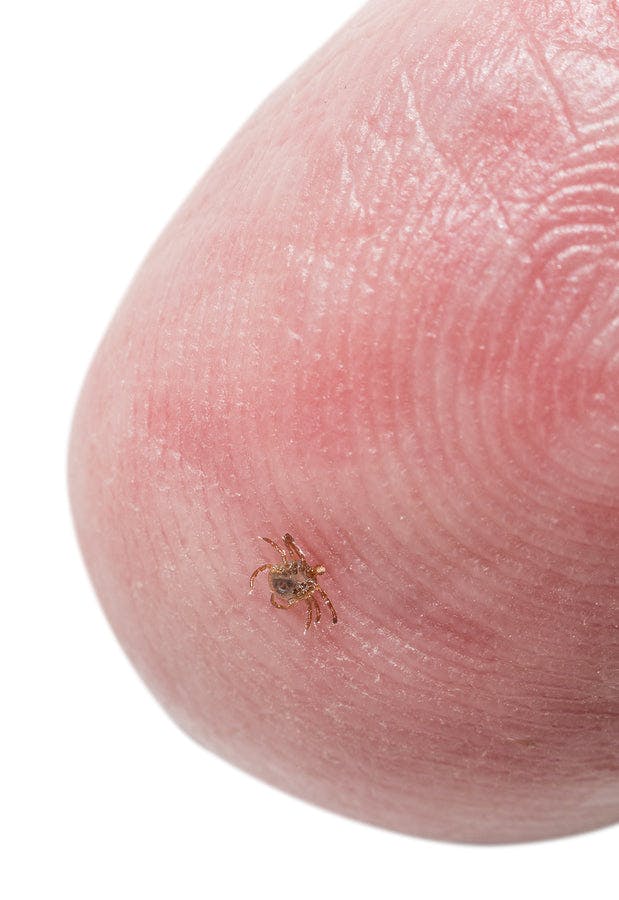
Show 1380: Avoiding Lyme and Other Tick-Borne Diseases (Archive)
Description
In this episode, two experts draw on the latest research about avoiding Lyme disease and other infections that may be transmitted through tick bites. Why are these conditions so difficult to diagnose? Most importantly, how can people with lingering symptoms from Lyme get help and start to feel better? We consider both conventional and alternative approaches.
The Basics of Lyme Disease:
We begin with a quick review of the history of Lyme disease, which was first identified in Old Lyme, Connecticut, in the 1970s. Researchers eventually identified the pathogen causing the symptoms as Borrelia burgdorferi and means of transmission as bites from a black-legged tick (aka deer tick). Even though it was originally thought to be limited to New England, epidemiologists now recognize that Lyme disease is widespread across the country. Half a million people will come down with Lyme disease this year. Many others will suffer symptoms from other pathogens transmitted through tick bites.
Persistent Symptoms of Lyme Disease:
For much too long, doctors thought that any symptoms persisting after a course of antibiotics were psychosomatic. Patients were understandably distressed by this dismissal of their suffering. Many people report fatigue, body aches and brain fog. Some have difficulties with balance or feeling weak or faint when they stand and have been diagnosed with POTS (postural orthostatic tachycardia syndrome). Headaches, rashes, heart palpitations and joint pain may also be part of the picture. If you think some of these symptoms ring a bell, you are right. Many people with long COVID or even chronic fatigue suffer with similar problems.
Avoiding Lyme or Treating It Over the Long Term:
One of our expert guests, Dr. John Aucott, does research on Lyme disease and directs the Johns Hopkins Lyme Disease Clinical Research Center. His study utilizing functional MRI was very revealing. When regular imaging studies are done on people with persistent Lyme disease symptoms, the results are not particularly striking. But functional MRI results, when people are asked to do cognitive tasks while undergoing magnetic resonance imaging, show a different picture. These people’s brains are not functioning normally. No wonder they are upset about brain fog or struggling to concentrate!
There are several possible explanations for why Lyme disease symptoms may persist. The spirochete responsible for these symptoms does not require oxygen and is very good at “hiding out” within tissues. When reactivated, it could cause symptoms. On the other hand, the immune system may become hyper-activated and have a hard time calming down. That too could contribute to symptoms. Non-governmental organizations have funded the Study of Lyme Immunology and Clinical Events (SLICE). In this trial, researchers have identified some risk factors associated with post-treatment Lyme disease (PTLD, aka long Lyme). They are also enrolling patients in a treatment trial.
Standard of Care for Lyme Disease:
Naturopathic doctor Alexis Chesney points out that there are different standards of care for Lyme disease. The CDC has published guidelines for treating “four important manifestations of Lyme disease.” Those are erythema migrans (the classic “bulls-eye” rash), neurologic Lyme disease, Lyme carditis and Lyme arthritis. The International Lyme and Associated Diseases Society (ILADS) offers its own treatment guidelines.
Both experts agree that early treatment is preferable to late treatment. Dr. Chesney describes the ability of the Borrelia spirochete to protect itself by changing to a “round form” as well as by forming a biofilm that wards off antibacterial medicines. One way to combat this is by utilizing herbs that can counteract biofilm formation, such as cats’ claw or Japanese knotweed. She also pays attention to supporting patients experiencing a Herxheimer reaction, in which dying spirochetes release toxins. This can make a person feel very ill indeed. Natural ways to mitigate this response include milk thistle, burdock or Epsom salt baths.
Avoiding Lyme Disease by Preventing Tick Bites:
Even better than early treatment is prevention. The best prevention is to avoid tick bites. Wear shoes and socks that have been treated with permethrin. (Do not apply permethrin directly to the skin.) Using an effective insect repellent also helps, and a thorough tick check upon coming in from outdoors is indispensable. It takes ticks some time to transmit Borrelia, so prompt tick removal can help prevent illness.
This Week's Guests:
Dr. John Aucott is the Barbara Townsend Cromwell Professor in Lyme Disease and Tick-borne Illness at the Johns Hopkins University School of Medicine. An infectious diseases specialist and Lyme disease expert in the Division of Rheumatology, he is the director of the Johns Hopkins Lyme Disease Clinical Research Center. https://www.hopkinslyme.org/
[caption id="attachment_130160" align="alignnone" width="300"] John Aucott, MD, Johns Hopkins University[/caption]
John Aucott, MD, Johns Hopkins University[/caption]
Alexis Chesney, MS, ND, Lac, is a naturopathic physician, acupuncturist, author and educator. Since 2010, Dr. Chesney has worked with people of all ages on chronic disease, general wellness, nutrition and lifestyle counseling. She has dedicated herself to working with clients who have complex chronic illness, and who often have diagnoses such as Lyme and vector-borne diseases, mold toxicity, mast cell activation syndrome, among other conditions. Dr. Chesney is the author of Preventing Lyme & Other Tick-Borne Diseases: Control Ticks in the Home Landscape; Prevent Infection Using Herbal Protocols; Treat Tick Bites with Natural Remedies. Dr. Chesney offers an online course, Preventing Lyme and Tick-Borne Disease: Ticks and Tick-Borne Diseases, Prevention, and Acute Lyme & TBD Treatment. Here is the link: https://health-transformations.teachable.com/p/preventing-lyme-and-other-tick-borne-diseases.
Her website is https://www.dralexischesney.com/
 Alexis Chesney, MS, ND, Lac, author of Preventing Lyme and Other Tick-Borne Diseases[/caption]
Alexis Chesney, MS, ND, Lac, author of Preventing Lyme and Other Tick-Borne Diseases[/caption]Confidence
Thank you for sharing your thoughts about one of our products! Please focus on the product performance and quality. Please read our Privacy Policy and Terms of Use for more information about the review process.
